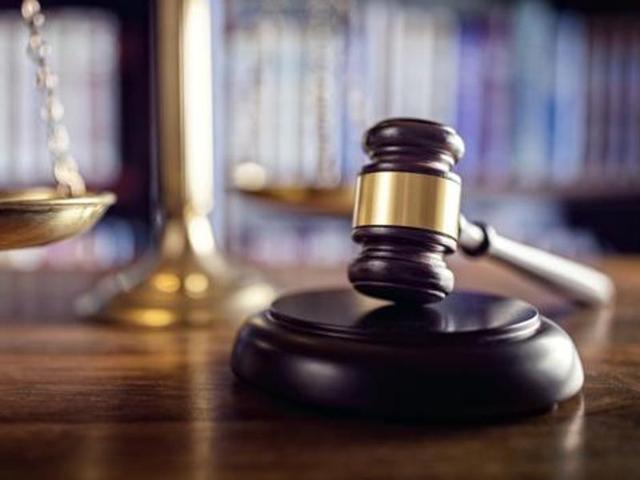Real issue is judicial overreach, not judges’ appointment
Chief Justice of India TS Thakur’s unusual comments on Prime Minister Narendra Modi’s Independence Day speech has brought the wrangling between the government and judiciary over judicial appointments out in the open.
Chief Justice of India TS Thakur’s unusual comments on Prime Minister Narendra Modi’s Independence Day speech has brought the wrangling between the government and judiciary over judicial appointments out in the open.

Addressing an Independence Day function organised by the Supreme Court Bar Association, the CJI said: “I was hoping he (Modi) will speak about issues plaguing the justice delivery system. However, he did not. I request the government to pay attention to our judiciary, especially appointment of judges.”
Coming barely three days after the CJI threatened to pass judicial orders if the government didn’t clear the logjam over judges’ appointments soon, the comments point to the widening gap between the two sides over the prickly issue.
Justice Thakur had made a rare emotional appeal to PM Modi in April to double the number of judges to handle an “avalanche” of cases and criticized the Centre and state governments for unfairly putting the onus on the judiciary to clear the burgeoning backlog.
On the face of it, the showdown appears to be over the selection of judges. But the real issue lies in the growing imbalance in separation of power. The government sees it as an instance of judicial overreach. Ever since the judiciary arrogated to itself all powers to appoint judges through a judicial coup in 1993, the executive – irrespective of ideology of the party in power – has been trying to ‘restore’ the balance.
Political leaders have openly criticized the collegium as an extra-constitutional system under which judges appoint judges under complete secrecy. That’s why Parliament unanimously passed the National Judicial Appointments Commission (NJAC) Act to create a six-member panel headed by CJI with two senior most SC judges, Law Minister and two eminent persons as its members to appoint judges.
But the SC declared the NJAC Act unconstitutional and revived an admittedly opaque collegium system. Even after another round of hearings on making the collegium transparent, the SC left it to the government to draft Memorandum of Procedure (MoP) resulting into the current logjam. Had the SC clearly laid down guidelines to make the collegium transparent, the present stalemate could have been avoided.
Read: SC’s NJAC verdict sets stage for judiciary-legislature face-off
Supreme Court lawyer Prashant Bhushan told HT. “The collegium system lacks transparency inasmuch as even the names of proposed appointees are not disclosed. Secondly, there are no criteria on the basis of which someone can be selected for appointment as a judge.”
He said: “The issues of MoP and transparency were argued before the constitution bench. It would have been better if they (SC) had laid down the procedure to make the collegium system transparent, rather than leaving it to the government.”
As the judiciary and the government spar over selection of judges, the cases keep on piling up. According to official figures, India’s 24 high courts have nearly four million cases pending before them while 478 out of 1,056 sanctioned posts remain vacant. Around 30 million cases await disposal in trial courts where 4,432 out of 20,502 sanctioned posts of judges were yet to be filled. The SC too has only 28 judges against the sanctioned strength of 31 judges to tackle around 60,000 cases.
The Indian judicial system is one of the largest in the world. But, according to a 2012 National Court Management Systems report, although the number of judges increased six-fold in the last three decades, the number of cases shot up 12-fold.
Even by conservative estimates, the number of cases reaching courts will touch 15 crore requiring at least 75,000 judges in the next three decades, the report said.
There are other factors also that contribute to the pile-up of cases. The infrastructure available for courts - particularly lower courts - is inadequate, besides serious shortage of judges. Many courts function from rented buildings, while nearly 7,000 proposals for building courthouses were still awaiting state governments’ clearance.
Despite the Law Commission, parliamentary standing committee and the Supreme Court saying that the judge-population ratio in India should have 50 judges per one million people, the ratio continues to be abysmally low at 13 judges per one million people.
“Nothing has moved” since 1987 when the Law Commission had recommended increase in the number of judges from then 10 judges to 50 judges per one million people, CJI Thakur had said.
According Law Commission’s 120th report submitted to the government in 1987, countries such as the US, England, Canada and Australia had a much better judge-population ratio of 107, 50.9, 75.2 and 41.5 way back in the 1980s.
As a result of poor judge-population ratio, even if judges work at a frantic pace, they may never be able to clear the backlog. This situation remains like this despite judges across the court system handling 2,600 cases each annually and together clearing 20 million cases, the CJI had pointed out.
The current stalemate has only worsened the situation.
The judicial coup happened in the 1990s when coalition politics and corruption cases made the political class too vulnerable to assert. But with the BJP enjoying an absolute majority in the Lok Sabha, it’s only natural for the government to attempt to regain the lost ground for the executive and ‘restore’ the balance in separation of power envisaged under the Constitution.
PM Modi had in April said his government was ready to discuss the issues to find a way out. If both sides don’t resolve the stalemate at the earliest, they can do it only at the cost of their credibility.
Get Current Updates on India News, Lok Sabha election 2024 live, Election 2024 along with Latest News and Top Headlines from India and around the world.



